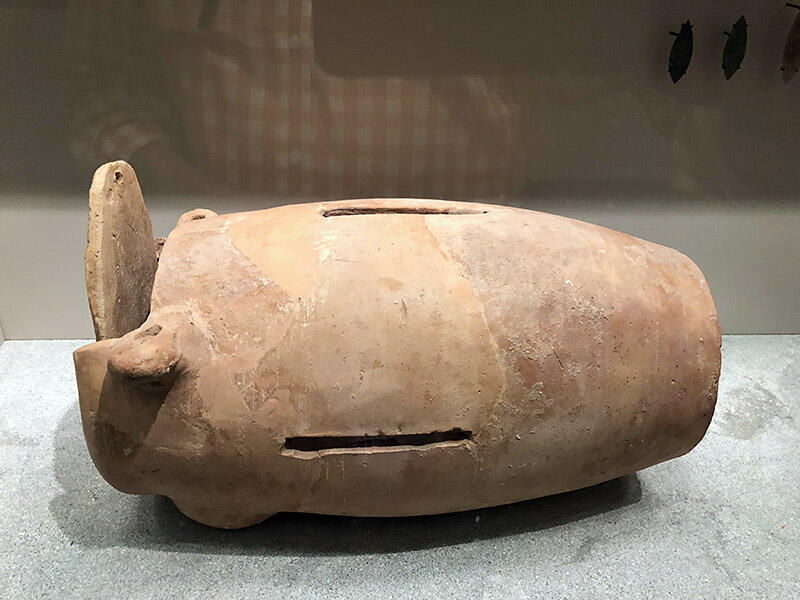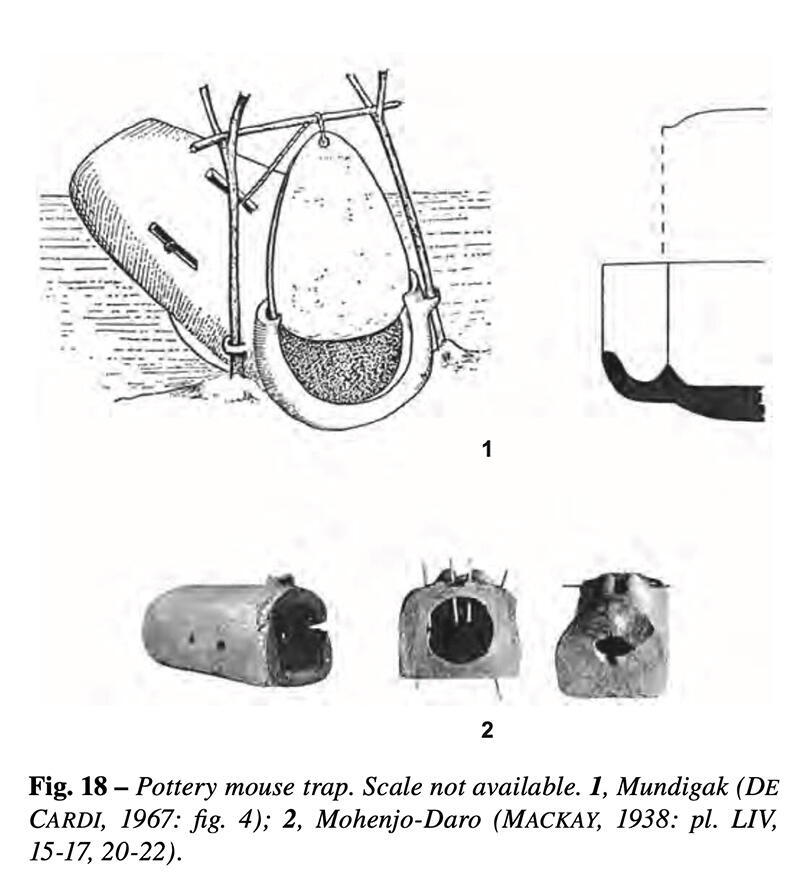The caption at the Guimet identifies this as a rat trap, one of two similar ones found at the site. The sliding door on the left would have let a rat or perhaps another creature like a mouse in. Similar objects were found at Mohenjo-daro, also of terracotta; Mackay describes a similar one from there as "made on a wheel from the usual clay, with an admixture of lime and mica and it was cut off from it with a strong in the usual way, the edge of its open end showing clearly the marks left by the cord. The base was then flattened to prevent it from rolling; and holes were drilled in various parts of it after it had been baked" (E.J.H. Mackay, Further Excavations at Mohenjodaro: Being an Official Account of Archaeological Excavations at Mohenjo-daro, p. 427).
The holes seen here on the sides and top of the door were presumably used to lower a door, perhaps as part of a trap that drew the rat or mouse in (see Image 2 as Casal envisaged the trap working), as seen in other examples from ancient Iran and Egypt (D.C. Drummond, Pottery Rodent Traps A Preliminary List, 1980).
E. Cortesi, M. Tosi, A. Lazzari and M. Vidale see this in a similar light: "Two pottery mouse traps found at Mohenjo-Daro, in relatively recent occupation layers, can only be compared with two similar devices found at Mundigak, Period IV, 1 and one from Bampur. The technical principles of the traps found in the two protohistoric cities (Image 2) might have been different, perhaps involving the use of a knot at Mohenjo-Daro against a downward sliding pottery lid at Mundigak. Nonetheless, the overall similarity of the ceramic containers suggests a parallel adaptation, based upon shared know-how, for coping with common problems of rodent infestations in the “domestic universes” of the two civilizations. The specimens from Mundigak might be several centuries older than the Mohenjo-Daro ones, suggesting that such an adaptation was as widespread in time as in space." (Cultural Relationships Beyond the Iranian Plateau: The Helmand Civilization, Baluchistan and the Indus Valley in the 3rd Millennium BCE, pp. 23-24).




